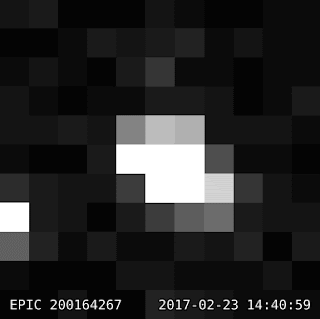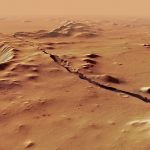Key Takeaways:
- NASA has released the first images of the Trappist-1 star system, which houses seven Earth-like planets.
- The images, obtained from the Kepler space telescope, reveal pixelated data showing transiting planets passing in front of the star.
- While not visually stunning, this data is invaluable for scientific research and will help refine measurements of the planets.
- Scientists hope to learn more about the planets’ orbital properties and the host star’s magnetic activity.
- This data, representing one of the longest continuous studies of the system, will aid in future studies and may benefit the James Webb Space Telescope mission.
Ever since NASA’s groundbreaking announcement of the Trappist-1 star system, featuring seven Earth-like planets situated just 39 light-years away, the scientific community and the public have eagerly anticipated the first visual insights into this intriguing celestial neighborhood.
Recently, NASA provided a much-anticipated sneak peek at Trappist-1, although it might not fulfill the vivid imaginations that have soared regarding these distant worlds.
The images, derived from raw data captured by the Kepler space telescope, present a pixelated view of our “ultra-cool neighbor,” with minuscule fluctuations in brightness indicating the passage of these planets across their parent star.

In contrast to the breathtaking artistic renderings that have mesmerized our imagination, this initial view offers a more technical and abstract representation. Nevertheless, the significance of these observations to the scientific community cannot be overstated.
Kepler initiated its observation of Trappist-1 in December and has now released a dataset covering 74 days of continuous monitoring, from December 15 to March 4. The discovery of this system was originally made through the combined efforts of NASA’s Spitzer Space Telescope and ground-based observatories.

These new observations will enable scientists to refine their existing measurements for six of the planets within the Trappist-1 system. Additionally, they will gain a deeper understanding of the orbital characteristics and mass of the seventh planet, potentially shedding light on the host star’s magnetic activity.
Geert Barentsen, a K2 research scientist at NASA’s Ames Research Center, expressed the widespread enthusiasm for learning about these Earth-sized worlds. He emphasized the importance of swiftly providing the K2 raw data to investigators, enabling them to plan follow-up research effectively and allowing the public to engage in the excitement of discovery.

This dataset represents one of the most extended and uninterrupted studies of the newly found Trappist-1 system. Researchers intend to leverage this data to investigate the gravitational interactions among the planets and to search for any hidden planets that may have eluded previous detection.

The serendipity of Kepler’s ability to observe Trappist-1 was fortuitous. Had the telescope adhered to its original coordinates set in October 2015 (referred to as Campaign 12), it would have missed the planets entirely. However, the recalculated coordinates following the announcement of the initial three planets in May allowed for these groundbreaking observations.


